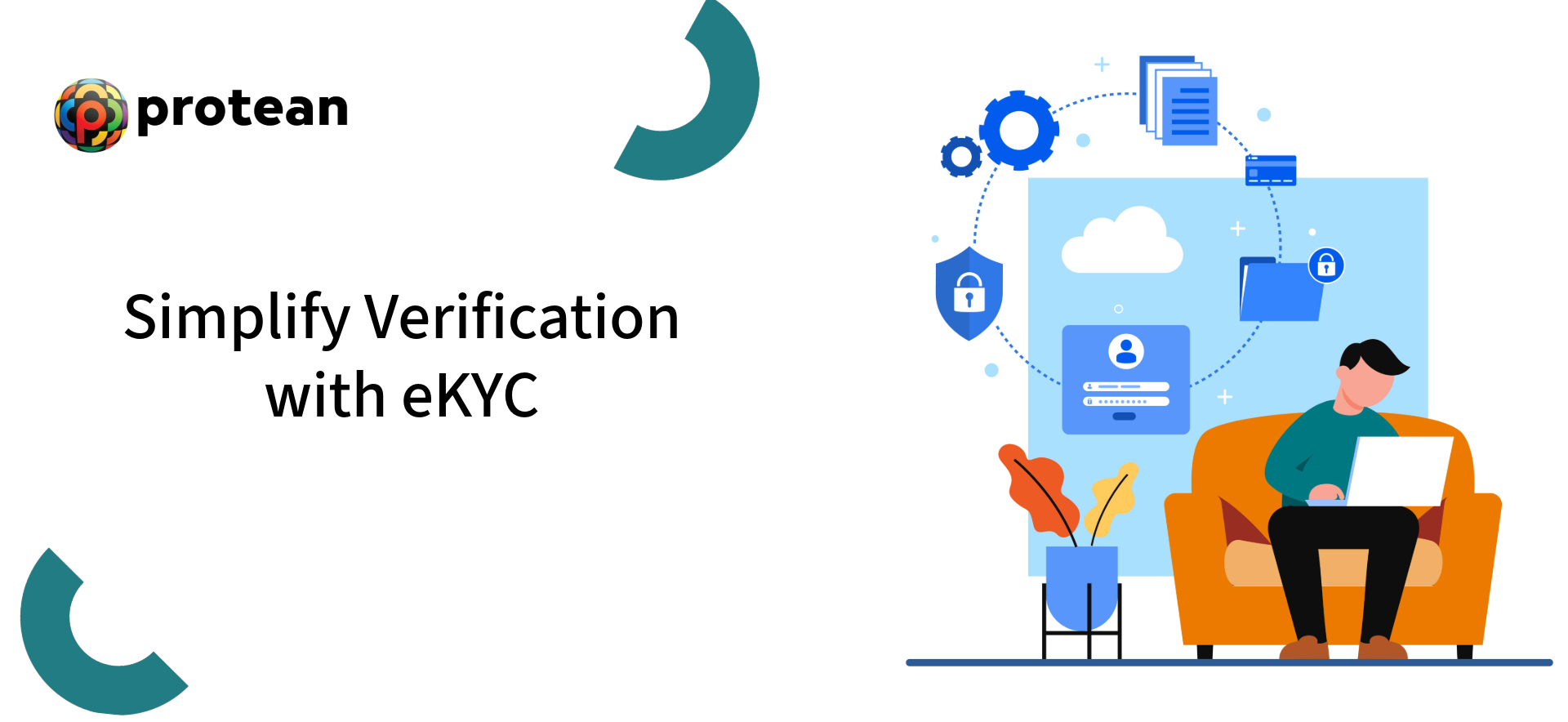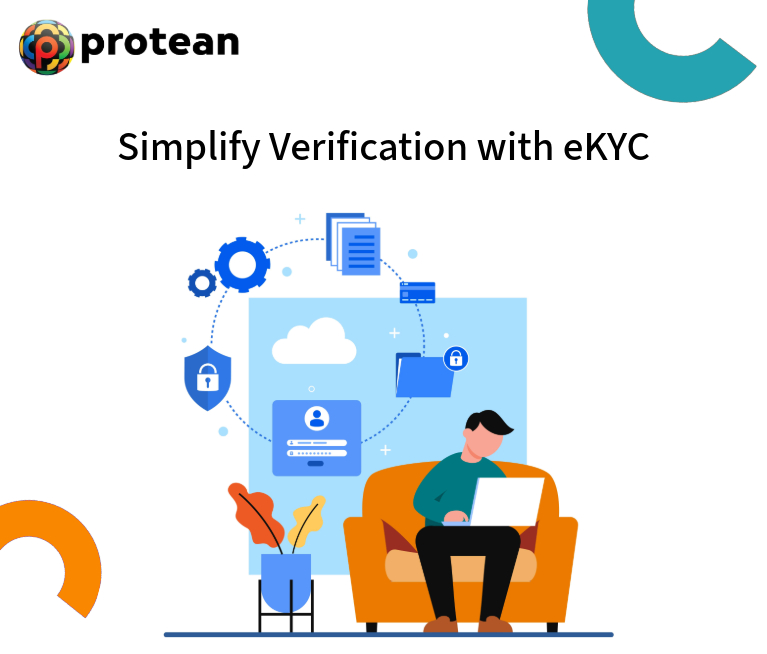Are you confused between choosing eKYC online processes or traditional KYC for your business?
The transformation from traditional Know Your Customer (KYC) procedures to eKYC online has marked a pivotal development in identity verification within banking, fintech, insurance, and other regulated industries.
Traditional KYC can involve manual processes such as physical document submission and in-person verification, resulting in slow and labor-intensive procedures.
In contrast, eKYC online process leverages the following for smooth and secure customer onboarding:
- Digital authentication
- Biometrics
- Automated systems
As of June 2025, India recorded over 39 crore eKYC transactions per month. Let us explore how eKYC differs from traditional methods in this write up:
What is eKYC and KYC
Traditional KYC typically can require customers to:
- Physically visit bank branches
- Present multiple identity proofs (e.g., PAN, passport, utility bills)
- Fill forms
- Submit photocopies.
The process is dominated by manual data entry by staff and verification across internal and external databases.
For example, prior to 2020, opening a savings account could take several days to weeks, repeated visits and document resubmissions were not uncommon.
This manual approach was prone to human error, forgery, data mismatches, and delays. It also restricted access for rural populations and placed higher costs on institutions.
In contrast, eKYC online processes streamline this via digital platforms. India’s flagship example is Aadhaar-based eKYC, which uses OTP or biometric authentication to validate identity. Depending on the risk level, institutions may use video KYC, OCR, or secure document uploads. Protean eGov Technologies, a key Aadhaar Authentication Service Agency (ASA) and KYC Registration Agency (KRA), provides API-driven eKYC infrastructure that simplifies integration for banks and fintechs.
Data from early 2025 highlight the shift: January saw over 43 crore eKYC transactions, with cumulative totals crossing 2,268 crore. By June, nearly 39.5 crore monthly, reflecting consistent growth. Simultaneously, face-based Aadhaar authentication exceeded 15 crores monthly, with cumulative transactions surpassing 175 crores.
Differences Between eKYC and Traditional KYC
The table below outlines core differences:

These differences show eKYC as not just a modern convenience, but a transformational shift, unlocking financial access for previously underserved populations.
Benefits of eKYC Over Traditional KYC
The following are the benefits of eKYC over traditional KYC:
- Ultra-Fast Onboarding
Aadhaar-based eKYC enables identity confirmation within minutes. Protean eGov Technologies Ltd. provides plug-and-play solution allowing easy onboarding, reducing drop-offs which is essential for both fintechs and traditional banks. - Significant Cost Reduction
Digital verification significantly reduces costs associated with printing, scanning, physical storage, and manual processing, leading to a substantial decline in customer onboarding expenses for banks when compared to traditional KYC methods. - Improved Customer Experience
Consumers now enjoy instant service, remote account opening, and fully paperless interactions, giving businesses a strong edge, especially with digital-first customers.
- Fraud Prevention and Security
Authentication via Aadhaar biometrics, OTP, and AI-based face matching minimises fraud risk. Face-based validation, which surpassed 15 lakh monthly transactions in June 2025, underscores rising trust in biometric safeguards. - Regulatory Compliance & Traceability
eKYC by compliant ASAs like Protean ensures auditability and adherence to AML/CFT requirements, reducing institutional risk and enhancing transparency.
When Is Each Method Used: eKYC vs Traditional KYC
Let us look at when an eKYC online method used against traditional KYC:
- eKYC Online
eKYC is typically employed for low- to medium-risk customer profiles, including standard savings account openings, mobile wallet activations, mutual fund registrations, and SME lending. Its widespread adoption accelerated during the post-COVID recovery phase, with urban digital onboarding accounting for the majority of new bank accounts.
- Traditional KYC
Traditional KYC still remains relevant for high-risk customers and large-value accounts, for large deposits and for corporate entities. It is also applicable to individuals who are unable or unwilling to use digital channels, including some senior citizens. Additionally, traditional KYC is required in situations where regulations mandate physical verification, such as certain loan categories or securities accounts governed by cross-border compliance norms.
Many institutions now follow a hybrid approach, scaling with eKYC online processes, but relying on in-person KYC as a fallback for exceptions.
Real‑World 2025 Use Cases of eKYC
The following are the popular eKYC uses cases:
- Aadhaar Adoption and Face KYC
PIB data shows that in June 2025, India recorded 229 crore authentication transactions, including 39.5 crore eKYC and 15.9 crore face auth; all facilitated by eKYC systems. - Pilgrim Registration in Uttarakhand
The Char Dham and Hemkund Sahib Yatra 2025 used Aadhaar eKYC for over 750,000 pilgrim registrations, significantly easing crowd control and operational efficiency. - Private Sector Aadhaar Access
A 2025 regulatory update enables private entities such as banks, fintechs, healthcare providers, and even travel/hospitality businesses to conduct Aadhaar authentication via regulated APIs. Protean eGov Technologies Ltd. aids these enterprises in integrating secure authentication. - Protean’s DPI Leadership
In 2025, Protean gained an NSE listing, expanded its DPI solutions (including 'DPI‑in‑a‑Box' for global markets), and deepened its eKYC integrations across sectors.
Conclusion
The shift from traditional KYC to eKYC online marks a true paradigm shift in financial onboarding. Driven by technologies such as Aadhaar authentication, biometric face matching, secure APIs, and digital public infrastructure, eKYC enables instant, secure, and cost-effective customer verification, even in remote areas.
With monthly eKYC volumes nearing 40 crore transactions and systems professionally supported by agencies like Protean eGov Technologies and regulated by UIDAI and MeitY, the ecosystem is both scalable and trustworthy.
While traditional KYC remains critical in high-risk scenarios, eKYC has become the default for mainstream banking and digital services. Financial institutions, regulators, and consumers must stay informed, adopt best practices, and embrace this refined model of customer onboarding to drive efficiency, inclusion, and compliance.
Transform your business's onboarding process with eKYC, get in touch with us now!

